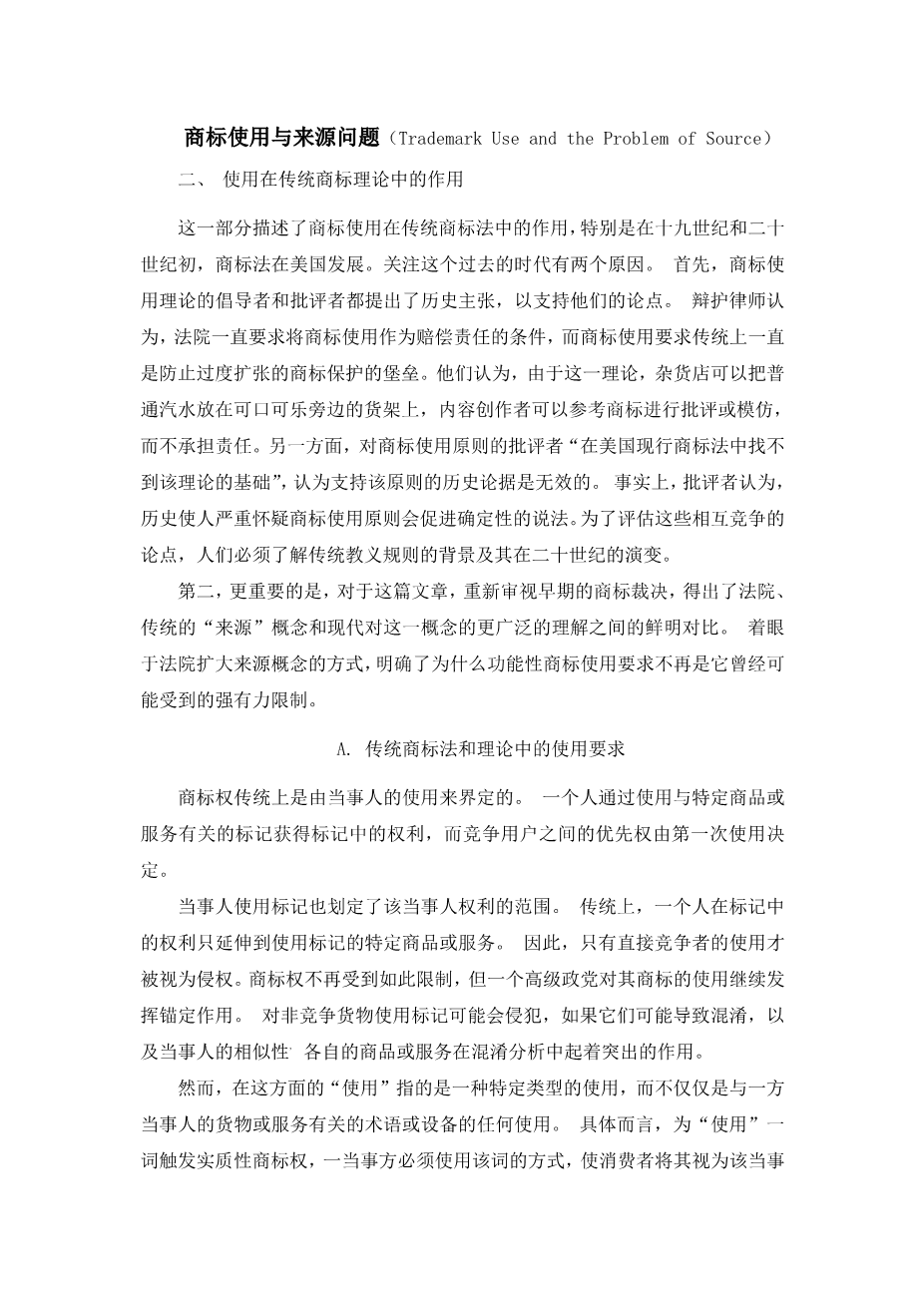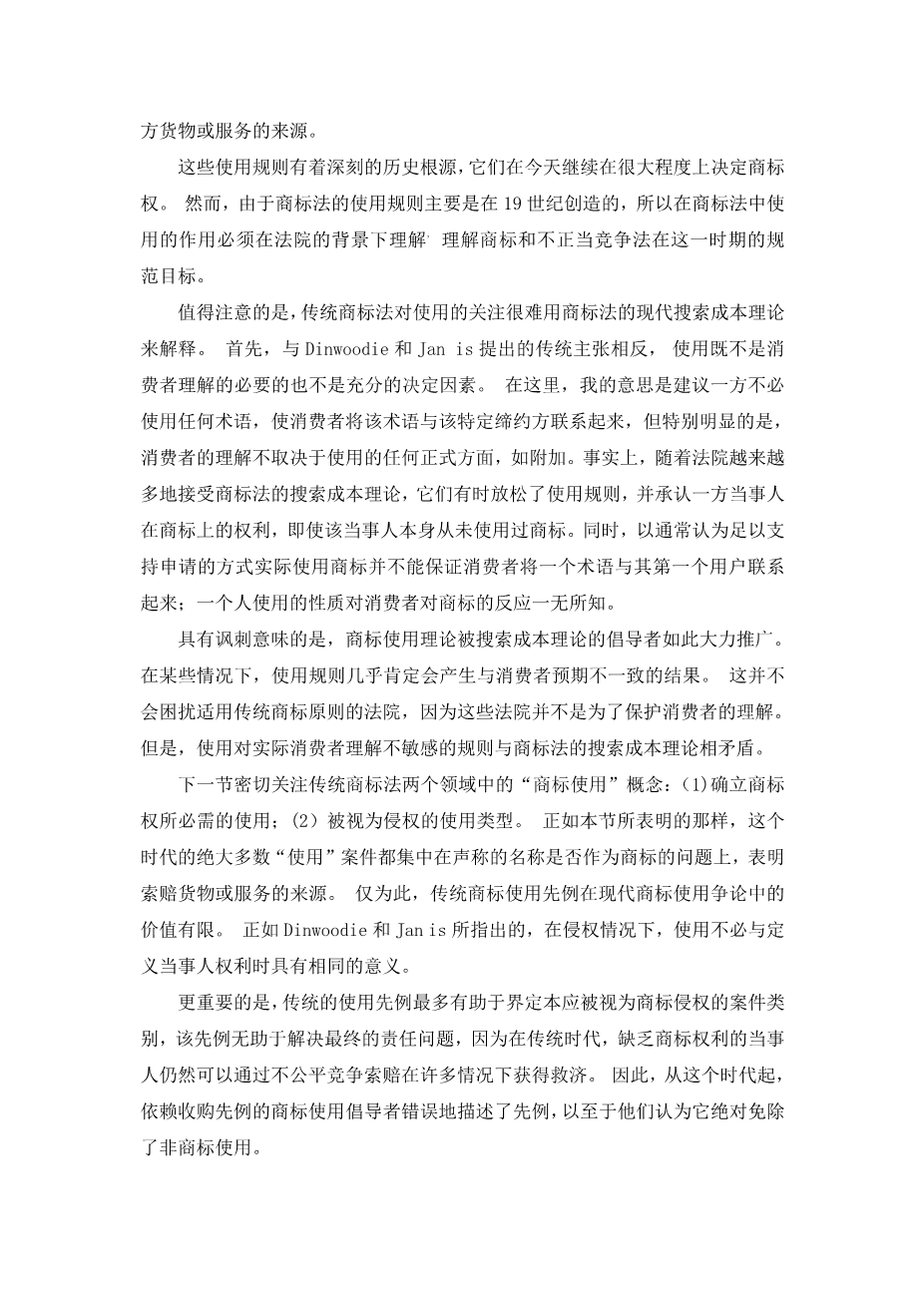Trademark Use or Not? Trademark Infringement or Not?
By:Jiao Hongbin , Liu Yuxin
Under normal circumstances, OEM refers to the situation where a Chinese manufacturer enters into an entrustment contract with an overseas company that owns the trademark(s), sometimes in China but in most cases, in other jurisdictions. The Chinese manufacturers are required to produce or process products according to the requirements of this overseas company, attach its trademark(s), and deliver all products to another country designated by this overseas company with no sales in China. Things become complicated when the overseasrsquo; companyrsquo;s trademarks registered outside China are registered by a third party which has no relation with the overseas company at all in China.
According to the current statutory law in China, there is no clear provision regarding whether or not the aforesaid scenario constitutes trademark infringement by the OEM manufacturer or the overseas company against the owner of the registered trademarks in China. The question can be at least considered at two tiers: firstly, whether the use of a mark in OEM activities is the use of a trademark as defined under the PRC Trademark Law; and if yes, then secondly, whether said uses constitute trademark infringement. The Supreme Peoplersquo;s Court of the PRC (“SPC”) answered in the affirmative at both tiers in its latest judgement delivered in a trademark infringement case[1] . A brief summary of the case is:
I. Factual Background
Company H enjoys registered trademark rights over the mark “HONDA” on vehicles in Class 12. A Chinese company manufactured vehicle parts for motorcycle under the engagement of a Burmese company who has registered trademark rights over the mark “HONDAKIT” in Burma. The Chinese manufacturer used the mark “HONDAKIT” on the vehicle parts in a way distinctively displaying “HONDA” alone and exported all the products to Burma. Company H then brought a trademark infringement lawsuit against the Chinese manufacturer.
II. The Courtrsquo;s Judgement
The Courts of two instances drew contrary conclusions as the first instance court believed that the Chinese manufacturerrsquo;s activities constituted trademark infringement while the court of second instance revoked its judgment. The SPC re-tried this case and sustained the first instance judgment in final.
III. The SPCrsquo;s reasoning
1. The Chinese manufacturerrsquo;s alleged infringing activities shall be recognized as OEM.
2. The Chinese manufacturerrsquo;s OEM activities shall be considered as use of a trademark. Use of a trademark refers to the activities of using a trademark to identify source of origin, which involve physical attachment of the mark as well as market circulation of the same, etc.,. All these factors shall be considered when deciding whether an activity shall be “use of a trademark” or not. Neither the product/service providerrsquo;s intent nor consumerrsquo;s conception of the role of the mark shall make the judgment alone. In this regard, as long as the mark is labelled or in some other way, used on the products and that such mark is possible to play the role of identifying source of origin, it should be viewed as “use of a trademark”.
3. With regard to the relevant public, apart from consumers, operators in the process of transporting the products also have the possibility of accessing the alleged infringing products. In addition, with the development of e-commerce, exported products may also find its way back to China and Chinese consumers are likely to get in touch with such products and become confused when traveling abroad too. As such, the Chinese manufacturerrsquo;s argument that the alleged infringing products were not sold in China and therefore the mark cannot be accessed by the relevant public in China, let alone serving as a source identifier was not tenable. Therefore, the Chinese manufacturerrsquo;s use of the mark shall be deemed as “use of a trademark” as contemplated by the PRC Trademark Law.
4. The alleged infringerrsquo;s subjective intent is irrelevant to establishment of trademark infringement. As long as there is a likelihood of consumer confusion, there could be trademark infringement. Neither consumerrsquo;s actual access of the alleged infringing products nor the occurrence of actual confusion is a requisite for establishing trademark infringement.
5. In conclusion, the Chinese manufacturerrsquo;s use of “HONDAKIT” should be deemed as “use of a trademark”. Considering that the mark is similar to Company Hrsquo;s registered trademark and the goods it designated are also similar to that of Company Hrsquo;s, consumer confusion is likely to occur. Therefore, the Chinese manufacturerrsquo;s activities constituted trademark infringement.
At last, the SPC particularly pointed out that it is inappropriate to simply classify OEM as an exception of trademark infringement and the Court shall keep the uniformity of the application of law. The SPC also expressed that the Court, when deciding foreign-related OEM trademark infringement cases, shall fully consider the domestic and international economic development situation, make specific analysis on and apply the law appropriately to the cases occurred in specific period, in specific market and/or through specific trade form.
In fact, the SPC has been vacillating in its opinions on said issues in several other previous OEM related cases, either administrative or civil, from 2012 to 2018, which include:
■ On June 29th, 2012, the SPC retried and decided in the MUJI case[2] , an administrative case regarding review of trademark opposition, that the use of a
剩余内容已隐藏,支付完成后下载完整资料


英语译文共 4 页,剩余内容已隐藏,支付完成后下载完整资料
资料编号:[267186],资料为PDF文档或Word文档,PDF文档可免费转换为Word


